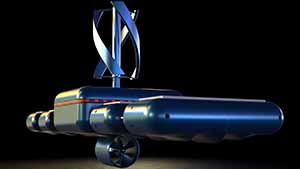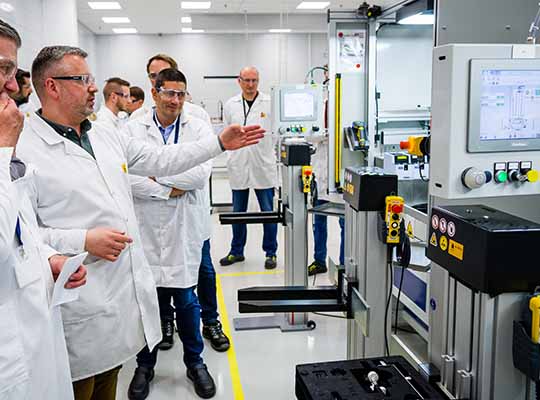WAVR LLC has introduced a prototype of its modular Wave Energy Converter (WEC) concept. The technology transforms the energy naturally produced by ocean waves into electricity. The prototype is a consumer-size unit, but the technology is expandable to larger applications. The design also allows for easy integration with other renewable energy technologies.
Although the first prototype produces less than 3 watts per square foot, less than a quarter of what new solar panels typically achieve, the company believes the technology holds great promise. Whereas peak solar averages less than seven hours per day, wave energy is nearly constant. Therefore, the WAVR device does not suffer from the intermittency issues that plague other renewable energy technologies. The need for batteries to balance the electrical load during dormant periods is significantly reduced, as are the environmental concerns related to battery systems.
However, WAVR’s patent pending technology does not have to compete with other renewable energy technologies – it can be used in conjunction with solar, hydroelectric and wind technologies, as illustrated on the company’s website: https://www.thewavr.com/index.html. Solar panels, wind turbines and hydroelectric water turbines can be incorporated into the WAVR design to make hybrid systems.
“We believe that there is a place for a technology that can generate a reliable source of electricity without over-reliance on batteries,” said WAVR founder Clyde Igarashi. “Obviously we’d like the output to be competitive with solar from the outset, but we’re happy with the first prototype. We expect future devices to have greater output as we upgrade components and continually improve the design.”

Early on, low power ocean applications that rely on a steady flow of electricity, such as data buoys and internet of things (IOT) devices, would be well suited for the WAVR technology. However, applications that require more electricity can also be accommodated because of the modular design – which facilitates expansion by increasing the number of modules used. If the number of modules is doubled, the electricity produced will also roughly double. The current prototype has five modules, but that number can be increased for applications with larger energy requirements. Furthermore, multiple WAVR devices can be set up in arrays to generate even more electricity, similar to solar farms.
The WAVR concept went from idea to prototype in a little over a year. The company accomplished this without the assistance of large partners or government grants, but it has already attracted the attention of prominent political and business leaders.
WAVR’s project advisor, former Hawaii Governor John Waihee, said: “Because we all realize the potential impact of the technology, I recommend that we prove the concept and disseminate the information as soon as possible. The Hawaii Clean Energy Initiative aims to achieve a 100 percent clean energy portfolio by 2045. … We may be late to the party, but we can play an important part in achieving that goal.”













